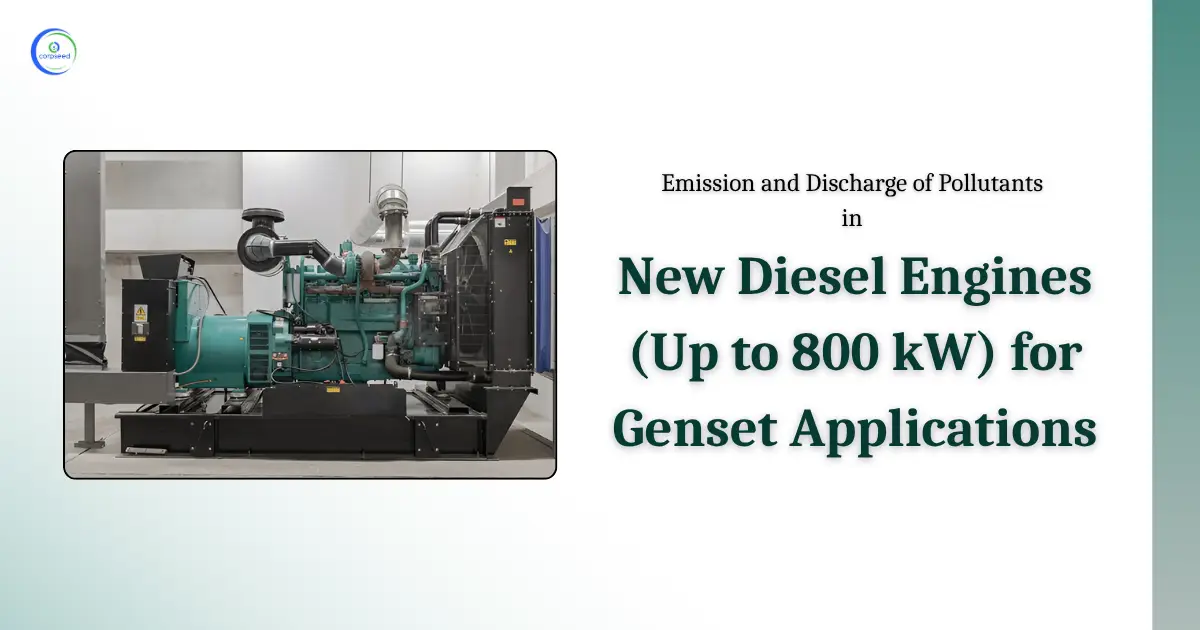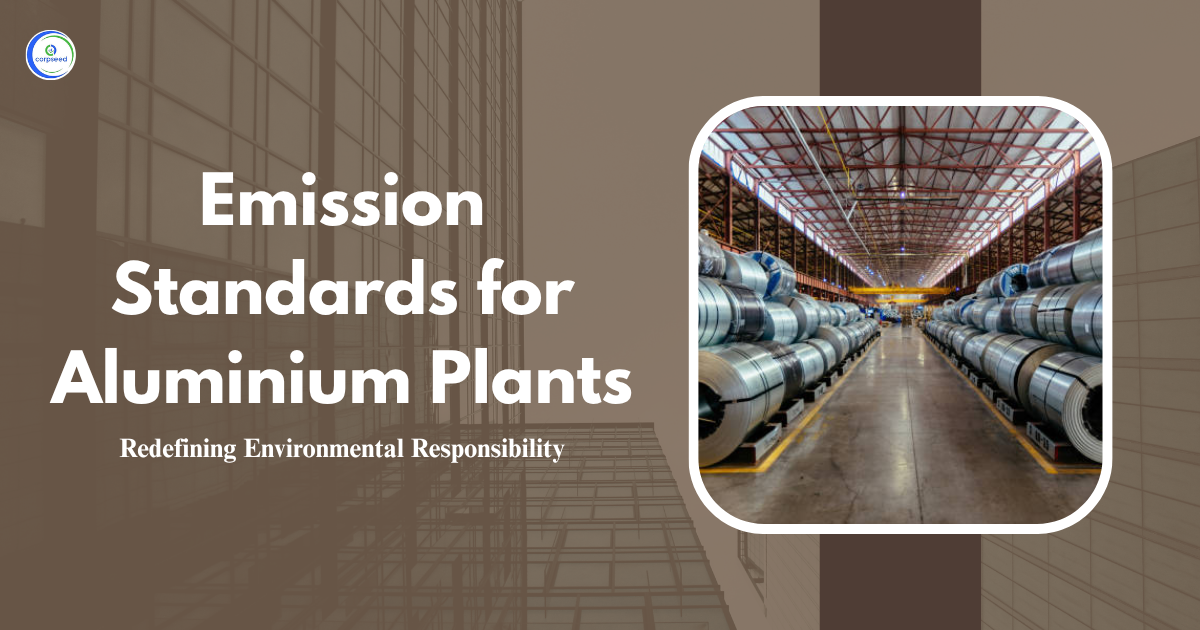Thermal power plants are the largest contributors to air pollution in India. To control their environmental impact, the Government of India has enforced stringent standards for emissions and discharge of pollutants. These standards aim to safeguard the environment and public health by encouraging the cleaner energy production.
Table of Contents
Environmental Protection Rules, 1986: A Foundation for Pollution Control
The Environment (Protection) Act, 1986, is an inclusive piece of legislation that empowers the central government to take measures to safeguard and improve the environment. Under this Act, the Environment (Protection) Rules, 1986 were enacted, which laid down the standards for emissions and discharge standards in numerous industries, including thermal power plants.
These rules permit the government to set permissible limits for environmental pollutants and specify procedures for monitoring and enforcement. Over time, the Rules have been updated to reflect technological advancements and environmental requirements. The Environment (Protection) Amendment Rules, 2018 introduce particular emission and water consumption standards for thermal power plants, especially those commissioned after January 1, 2017. The focus areas comprise less SO2 (Sulfur Dioxide), NOx (Nitrogen Oxide), and Particulate Matter (PM) emissions, along with zero liquid discharge mandates.
--------------Blog Contact Form-------------
Environmental Pollutants from Thermal Power Plants
Thermal power plants mainly use coal and fossil fuels for electricity generation, leading to significant emissions and discharges Due to these pollutants, emission and discharge norms are necessary to mitigate the negative effects of thermal power generation. The key pollutants released from these plants include:
- Sulfur Dioxide (SO2): Causes acid rain and respiratory problems.
- Nitrogen Oxides (NOx): Contributes to smog and ground-level ozone.
- Particulate Matter (PM): Fine particles that cause cardiovascular and respiratory issues.
- Fly Ash: A by-product that, if not managed properly, contaminates land and water.
- Carbon Dioxide (CO2): A greenhouse gas contributing to climate change.
- Heavy Metals and Mercury: Harmful to human health and ecosystems.
- Thermal Pollution: Caused by discharging heated water into nearby water bodies.
Benefits of Emission Standards for Thermal Plants
Well-implemented emission standards not only increase environmental quality but also stimulate technological innovation and industry responsiveness. Following are some of the key benefits:
- Improved Air Quality: Emission standards significantly minimize the discharge of harmful gases such as SO2 and NOx. This results in improved air quality, especially in areas near power plants, which reduces health risks to nearby populations.
- Better Water Resource Management: Thermal power plants are main water consumers. Standards such as maximum 3.0 m3/MWh water consumption and zero liquid discharge help save water and prevent contamination of local water sources.
- Compliance Encourages Cleaner Technology: By directing emission limits, the regulations boost thermal power plants to adopt cleaner fuels, scrubbers, low-NOx burners, and other pollution control technologies, which modernize infrastructure and reduce environmental impact.
- Improved Public Health Outcomes: Long-term exposure to SO2, NOx, and PM can cause respiratory and cardiovascular diseases. Emission controls help reduce these risks, resulting in healthier communities and lower public healthcare costs.
- Better Climate Change Mitigation: Although not limiting CO2 directly, these standards indirectly support carbon reduction by promoting energy efficiency and cleaner operations, collaborating with India’s commitments under global climate agreements.
Emission Standards for Thermal Power Plants
The Environment (Protection) Amendment Rules, 2018 specifically target emission control and resource optimization in thermal power plants. Key highlights of the standards include:
| SI. No. | Industry | Parameter | Standards |
| “5B | Thermal Power Plant (water consumption limit) using sea water | Water consumption | Items I to III in column 4 in serial number 5A above shall not be applicable to the Thermal Power Plants using sea water", |
- SO2, NOx, and Particulate Matter (PM) Standards: Emissions are to be monitored and corrected to 6% oxygen on a dry basis, ensuring uniformity and comparability.
- Specific Water Consumption: New thermal plants commissioned after January 1, 2017 must restrict water usage to maximum 3.0 m3/MWh.
- Zero Wastewater Discharge: These plants must achieve zero liquid discharge to prevent industrial effluents from polluting nearby land and water bodies.
- Ash Handling and Disposal: Plants are required to ensure 100% fly ash utilization and follow safe disposal methods to prevent air and groundwater contamination.
| Sl. No. | Industry | Parameter | Standards |
| "33A. | Thermal Power Plants with wet Flue Gas Desulphurization (FGD) | Stack Height/Limit | Power generation capacity: 100 MW and above or 100 m minimum - Less than 100 MW 0.555 or 30 m whichever is more" Q = Emission rate of S02 in kg/hr* H = Physical stack height in meter *total of the all Unit's connected to stack Note: These standards shall apply to coal / lignite based Thermal Power Plants." |
Monitoring and Reporting Requirements
To ensure compliance to standards, regular monitoring and transparent reporting are crucial. Regular monitoring not only ensures legal compliance but also helps plant operators classify inefficiencies and adopt better environmental practices. Thermal power plants are required to.
Install Continuous Emission Monitoring Systems (CEMS): These systems track pollutants like SO2, NOx, PM, and CO in real-time.
Report Data to CPCB and SPCBs: Plants must submit emissions data periodically to the Central Pollution Control Board (CPCB) and respective State Pollution Control Boards (SPCBs).
Third-party Audits: Independent environmental audits are recommended to verify compliance and assess risk.
Water Use Monitoring: Plants must also monitor water withdrawal and discharge volumes, ensuring that the zero discharge policy is executed effectively.
Online Dashboards and Public Access: In some cases, emissions data are made available to the public to enhance transparency and accountability.
Conclusion
Emission and discharge standards for thermal power plants are necessary to reduce environmental damage and protect public health. Through the Environment (Protection) Rules, 1986, and its following amendments, the government has implemented a clear framework for emission control in one of the most polluting sectors.
The application of these standards by regulatory bodies like CPCB and SPCB ensures responsibility and boosts power generators to adopt cleaner technologies. As India continues to transition towards sustainable energy, strong environmental compliance is a cornerstone of responsible industrial development.
By adhering to these emission standards, thermal power plants not only mitigates pollution but also contribute to India’s broad goals of clean energy and sustainable development.
This portion of the site is for informational purposes only. The content is not legal advice. The statements and opinions are the expression of author, not corpseed, and have not been evaluated by corpseed for accuracy, completeness, or changes in the law.
BOOK A FREE CONSULTATION
Get help from an experienced legal adviser. Schedule your consultation at a time that works for you and it's absolutely FREE.







_Corpseed.webp)
.webp)
